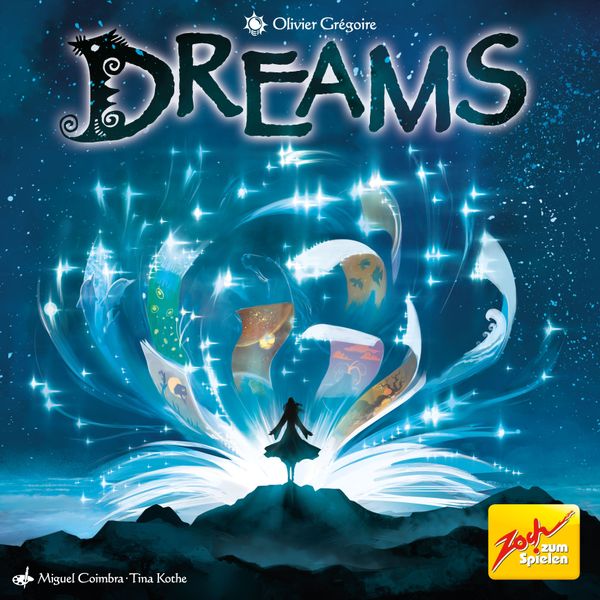Dreams (2016) Board Game
Dreams is a party game designed by Olivier Grégoire and published by Kaissa Chess & Games in in 2016. The game revolves around deduction, pattern building, pattern recognition, targeted clues, and voting. It is designed for 3 to 6 players, with the best experience being with 5 to 6 players. The game has a runtime of approximately 30 minutes and is suitable for players aged 10 and above.
Game Components of Dreams
How To Setup Dreams
To set up the game, each player receives a set of three star tokens and a player dial. Four cards are drawn and numbered with tokens. These cards are then shuffled in a double-blind manner to ensure only certain players know which card is the real image. Each player secretly receives a token indicating whether they are a god (with knowledge of the real image) or the mortal (who has no idea which image is real).
Gameplay Mechanics and Game Objective
– Bluffing: Players must pretend to know the real image if they are the mortal.
– Hidden Identity: One player is the mortal, while the others are gods.
– Perception and Intuition: Players interpret the images to make decisions.
– The objective is to score the most victory points by correctly identifying the real image or guessing the mortal’s identity.
– The game ends when a player reaches 16 or more victory points.
Gameplay Mechanics and Game Objective (Detailed List)
Player Experience
In **Dreams**, players engage in a fascinating game of perception and intuition, where each round becomes a discussion about why certain stars were placed in specific locations. The game encourages social interaction, as players debate and deduce who among them is the mortal. The variability in playtime and the option to forego scoring make it a flexible and enjoyable experience, suitable for players who appreciate bluffing and social deduction.
Pros
Cons
Personal Thoughts on Dreams
**Dreams** is ideal for players who enjoy games like **Dixit** or **Fake Artist Goes to New York**, where perception, intuition, and bluffing are key. It is a great addition to any game collection that focuses on social interaction and creative interpretation. However, it may not suit players looking for more structured or competitive games. If you enjoy a good conversation and some light-hearted guessing, **Dreams** is definitely worth trying out.
We are supported by our audience. When you purchase through links on our site, we may earn an affiliate commission, at no extra cost for you. Learn more.

